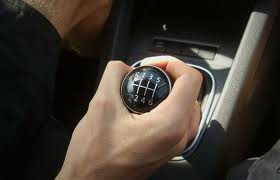
The system generally uses an electric actuator and electronic sensors, which replace the mechanical clutch linkage or hydraulic clutch connection, to monitor and control clutch positioning, completely replacing the hydraulic linkage between the mechanical clutch and pedal itself with a single electro-mechanical actuator. The clutch, however, will be a servo-controlled unit, connected to various actuators, a solenoid and sensors which control the clutch automatically.Īnother alternate means of clutch automation is the "clutch-by-wire" system.

2016 STICK SHIFT CARS DRIVER
Older clutchless manual transmissions (mostly prior to the 1990s) will retain H-pattern shifters, plus the shift gate, and will require the driver to select the required gear ratios manually. For example, BMW's "SMG" and Ferrari's "F1" transmission can skip gears on both downshifts and upshifts, when selecting gears manually via the steering wheel-mounted paddle-shifters, as seen on most modern transmissions. However, this is not the case for all modern transmissions. Most modern implementations of this transmission function in a sequential mode, where the driver can upshift or downshift by only one gear at a time. Torque and power transfer to the drive wheels will also be electronically controlled. When shifting gears, the driver selects the desired gear with the transmission shift lever, while electronic sensors and actuators connected to a TCU (transmission computer) or microprocessor will automatically operate the clutch and throttle to match revs and to re-engage the clutch in milliseconds. Gear shifting, clutch actuation, shift-timing, and rev-matching are all under automated control via the electronic sensors, computers, and actuators. Hydraulic or electro-hydraulic actuation, electro-mechanical, pneumatic, electromagnetic, or even purely electrical by means of an electric motor. Several different system to automate the clutch and/or shifting have been used over the years, but they will generally use one of the following methods of actuation for the clutch and/or shifting: During the 2010s, AMTs were largely replaced by the increasingly widespread dual-clutch transmission, but remained popular for smaller cars in Europe and some developing markets, particularly India where it is notably favored over conventional automatic and CVT transmissions.Īutomated manual transmissions can be semi-automatic or fully-automatic in operation. The usage of modern computer-controlled AMTs in passenger cars increased during the mid-1990s, as a more sporting alternative to the traditional hydraulic automatic transmission. Modern versions of these systems that are fully automatic in operation, such as Selespeed and Easytronic, can control both the clutch operation and the gear shifts automatically, by means of an ECU, therefore requiring no manual intervention or driver input for gear changes. These systems that require manual shifting are also referred to as clutchless manual systems.

2016 STICK SHIFT CARS FULL
Many early versions of these transmissions that are semi-automatic in operation, such as Autostick, which automatically control only the clutch - often using various forms of clutch actuation, such as electro-mechanical, hydraulic, pneumatic, or vacuum actuation - but still require the driver's manual input and full control to initiate gear changes by hand. It is essentially a conventional manual transmission equipped with automatic actuation to operate the clutch and/or shift gears. The automated manual transmission ( AMT) is a type of transmission for motor vehicles. Mid-2000s BMW SMG-III shifter, with a selector for the shift speed located below the shifter


 0 kommentar(er)
0 kommentar(er)
